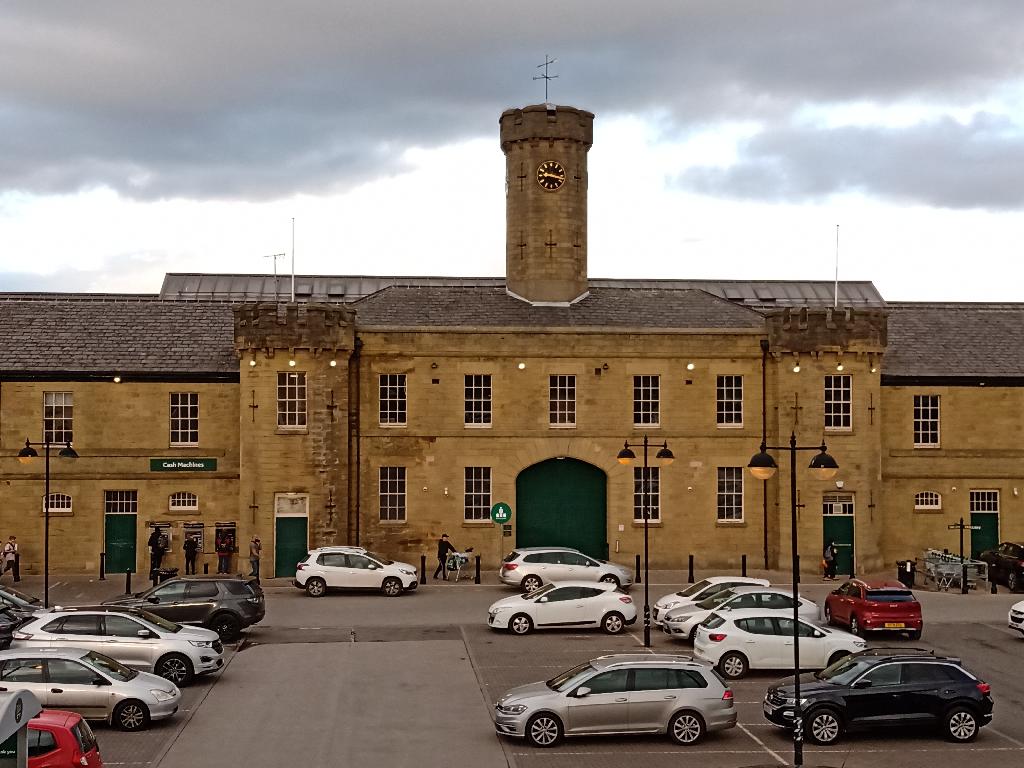From Rioting to Supermarket
Writing Challenge 2023
Posted by Chris Sissons on Jul 19, 2023
Writing Challenge » Chris Sissons

The Hillsborough Barracks are huge. The car park in the foreground is presumably the old parade ground. There are buildings on all 4 sides of the square. These days it is a shopping centre and the building in the photo is Morrisons supermarket, where I do a weekly shop.
I decided to photograph the barracks because I’ve mentioned them before and thought they show a side of Sheffield that is important. To be honest, though, they are not as old as I thought they were. There are few interpretation boards at the barracks and from the information I’ve been able to glean, they were built between 1848 and 1854.
I mentioned on Day 12 that the troops were sent in to suppress the early Trade Union movement in Sheffield. This would have been late 18th and early 19th century, around the time of the French Revolution and Napoleonic Wars. There were troops in Sheffield but not at the Hillsborough barracks. My main source for this information is “Sheffield Troublemakers” by David Price but my copy has vanished!
Cities exist through time as well as through space. But just as we can’t always get close enough to explore a building or an area, so too the past is often hard to make out, even the more recent past. So, what price honesty?
It’s not only that the past is hard to see but also because when we want to prove a point we’re prone to see whatever supports our argument.
Here is something I have found that supports my argument from Tom Cooper’s “The Story of Sheffield”. After the 1834 General Election, following the first Reform Act of 1832, troops were brought in from Rotherham to suppress the protests. Five people were killed and many injured. Parliament hushed it up. From that time forward the First Royal Dragoons were stationed at Shalesmoor, on the way to Hillsborough. Then Cooper writes, “In 1850, a massive new barracks was built at Hillsborough that, more than anything symbolised the military might deemed necessary to suppress the call for democracy among the people of Sheffield.” A magnificently ambivalent sentence!
There is something about the scale of this military presence that seems to suggest the reason for its presence was more than housing a few regiments. It was used by the military for less than a century, until the 1930s.
Sheffielders were skilled workmen who found the new millowners imported workers and brought down prices, so the more traditional traders found it harder to make a living. It’s easy to sing the praises of a city where steel was invented, stainless and special steels and cutlery and edge tools. But what was the cost of that innovation to working people and can we really connect with how they felt?
In the musical, Stirrings, we heard these words but to what extent do they capture the feelings of the people at the time: “We’re only Sheffield workmen and we don’t want to kill, but we have wives and children and they have bellies to fill.”
This year's Writing Challenge, fueled by prompts, is about the City of Sheffield. Be surprised by what's included and even more surprised by what's left out. This is Post 15 and there are 21 altogether. Share your thoughts and your love for the City in the comments. The first Post 0 is Context: Sheffield. The last post 14 is Men of Steel. The next post 16 is Lost Answers, Lost Questions.
Comments
Leave a comment.
Leave a comment.



 )
)